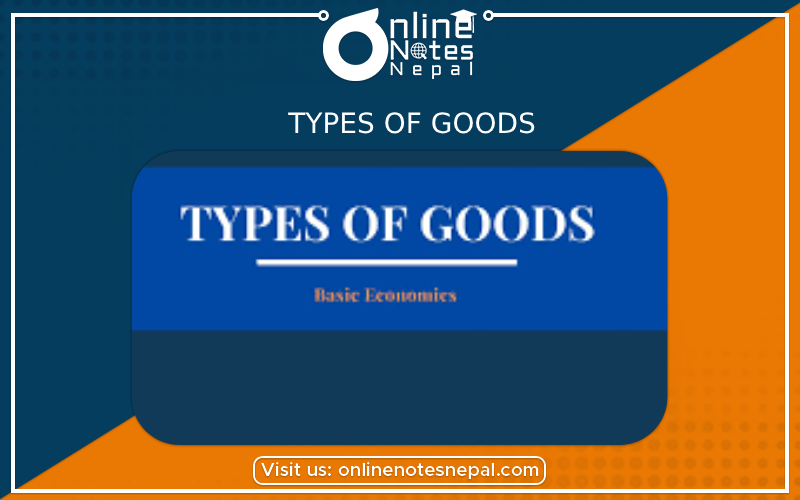Published by: Anu Poudeli
Published date: 04 Aug 2023

Goods are physical or tangible commodities produced or manufactured to meet human desires and requirements. They are the things that people buy and utilize in their daily lives or as inputs for manufacturing. Goods can be categorized into numerous sorts based on various characteristics.
Here are some examples of common goods classifications:
1Consumer Products:
2.Capital Items:
Other commodities and services are produced using capital goods. They are long-lasting and serve an important part in the manufacturing process. Machinery, equipment, and factories are some examples.
3.Subpar Products:
Inferior goods are ones whose demand falls as consumer income rises. When consumers' income rises, these commodities are frequently replaced by higher-quality alternatives. Low-quality or generic products are examples.
4.Ordinary Goods:
Normal products are those whose demand rises as consumer income rises. People prefer to buy more of these products when they earn more money. This category includes the majority of consumer products.
5.Luxury Items:
Luxury products are high-end, pricey commodities that aren't necessary for everyday life. They frequently have superior quality, a strong brand image, and exclusivity. Luxury automobiles, designer apparel, and high-end timepieces are a few examples.
6.Giffen Products:
Giffen items are rare and only appear when prices rise and demand rises. This seemingly paradoxical situation arises when a basic good, such as bread, becomes so expensive that people can no longer afford to buy other, more expensive foods, causing the staple good's demand to rise.
7.Free Stuff:
Free items are plentiful and do not require any work or money to obtain. Free items include air and sunlight.
8.Public Services:
Public goods are non-exclusive and non-rivalrous goods. Individuals cannot be barred from utilizing the good if it is non-excludable, and one person's consumption does not diminish the availability of the product for others. Street lights, national security, and public parks are a few examples.
9.Private Items:
Private commodities are goods that are exclusive and competitive. Excludable means that access to the good can be restricted, and rivalrous means that one person's consumption diminishes the product's availability for others. The majority of consumer products are private property.
10.Supplementary Products:
Complementary commodities are items that are frequently purchased together. When the demand for one of the goods rises, so does the demand for the complementary good. Computers and software are two examples, as are automobiles and gasoline.
11.Substitute Items:
Substitute goods are items that can be substituted for one another. When the price of one alternative rises, demand for the other rises as people switch to the cheaper choice. Tea and coffee are two examples, as are butter and margarine.
These are just a few examples of how goods might be categorised. Understanding consumer behavior, market dynamics, and economic trends requires the classification of commodities by firms, economists, and politicians.